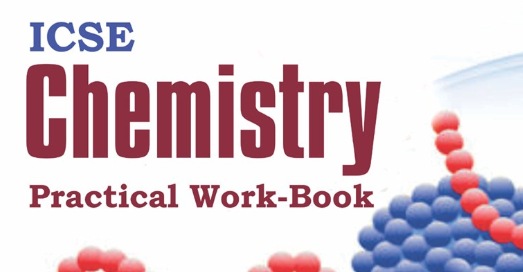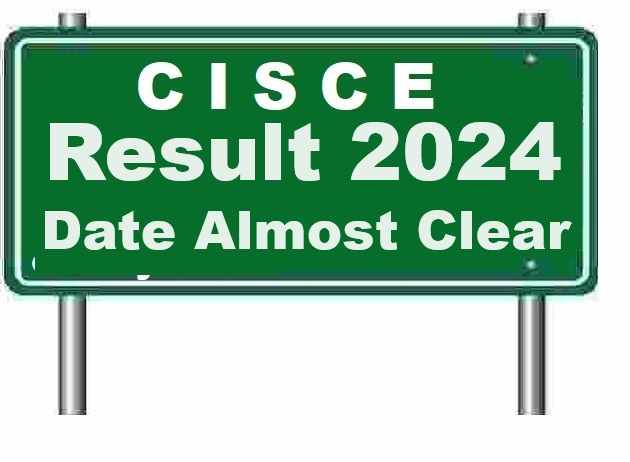Practical Work ICSE Class-10 Concise Chemistry Selina Solutions Chapter-13. We Provide Step by Step Answer of Exe-13 and Previous Year Questions of Chapter-13 Practical Work ICSE Class-10 . Visit official Website CISCE for detail information about ICSE Board Class-10.
Practical Work ICSE Class-10 Concise Chemistry Selina Solutions Chapter-13
-: Select Topics :-
Previous Year Question of Exe-13
Importance in Practical Work in ICSE Chemistry
This Chapter is the Combinations of many Chapter like Analytical Chemistry , Reactions in Chemical properties of Salt ,Test of Chemical compound. Identification of Gases, Deference with reaction. Hence Practical Work is very Important in ICSE Class 10th Chemistry.
How to solve Practical Work in ICSE Class-10Chemistry
Before viewing Solutions of Selina Concise Chemistry Chapter-13 Practical work. Read the Chapter -13 Practical Work as well as Analytical Chemistry Carefully to understand the concept in better way .After reading the Chapter -13 Practical Work and Analytical chemistry solve all example of these chapters of text book. For more practice on Practical Work try to solve exercise of other publications also such as Goyal Brothers Prakshan / new Simplified Dr Dalal Chemistry.
Exercise -13 Practical Work ICSE Class-10
Question 1
(a)Give only one suitable chemical test to identify the following gases.
(i)Ammonia
(ii)Sulphur dioxide
(iii)Hydrogen Chloride
(iv)Chlorine
(v)Carbon Dioxide
(vi)Oxygen
(vii)Hydrogen
(b)Select a basic gas mentioned in Q.1 (a). How is the basic nature suspected?
(c)Select acidic gases from the gases mentioned in Q.1 (a). How is the acidic nature suspected?
(d)The two gases A and B are bleaching agents. A is greenish yellow and bleaches due to its oxidizing property while B is colourless gas that bleaches due to reduction. Identify A and B?
(e)Which gas turn blue cobalt chloride paper light pink?
Give one similarity in test between (i)Cl2 and HCl (ii) SO2 and CO2.
Answer 1
(a)
(i) Chemical test for ammonia:
If a rod dipped in concentrated hydrochloric acid is brought near ammonia gas, dense white fumes of ammonium chloride (NH4Cl) are formed.
(ii) Chemical test for Sulphur dioxide:
It decolorizes pink coloured potassium permanganate solution.
![]()
(iii) Chemical test for HCl:
When HCl gas is passed through AgNO3 solution, white precipitates of AgCl are formed which gets dissolved in excess of NH4OH.
![]()
(iv) Chemical test for Chlorine:
It turns moist starch iodide paper (KI + starch solution) blue black.
(v) Chemical test for Carbon dioxide:
When this gas is passed through lime water, it turns milky due to the formation of white precipitates of CaCO3 and on passing excess of carbon dioxide gas, this milkiness disappears.
(vi) Chemical test for oxygen:
This gas is absorbed in colourless alkaline solution of pyrogallol and turns it dark brown
(vii)Chemical test for hydrogen:
It burns with a pop sound when a burning taper is brought near it.
(b)Ammonia is a basic gas and its basic nature is suspected through litmus paper test because it changes the colour of red litmus paper to blue.
(c)Chlorine, carbon dioxide, hydrogen chloride, hydrogen sulphide and sulphur dioxide are acidic gases since they convert blue litmus to red.
(d)A is chlorine and B is Sulphur dioxide.
(e)Water vapour.
Question 2
Name the gases which
a)Extinguishes burning wooden splinter.
b)Turns moist red litmus blue.
c)Do not effect moist litmus.
d)Affects the acidified K2Cr2O7 paper and also turns lime water dirty milky.
Answer 2
(a)O2
(b)NH3
(c)Water vapour
(d)SO2
Question 3
Name:
(a) Two carbonates which do not produce carbon dioxide on heating.
(b) A colourless gas which bleaches.
(c) Gases which has sour taste.
(d) Greenish yellow gas which also bleaches.
(e) Gas with rotten egg smell.
Answer 3
(a) Na2CO3 and K2CO3
(b) SO2
(c) CO2
(d) Cl2
(e) H2S
Question 4
From the following list of substances choose those which meet the description given in the part (a) below. Ammonium chloride, ammonium nitrate, chlorine, dilute hydrochloric acid, iron, lead nitrate, manganese (IV) oxide, silver nitrate, sodium nitrate, sodium nitrite and sulphur.
Two compounds whose aqueous solutions give white precipitates with dilute hydrochloric acid.
Answer 4
Silver nitrate and ammonium nitrate.
Question 5
Name the anion present in each of the following compounds:
(a) Compound A when warmed with concentrated sulphuric acid gives a gas which fumes in moist air and which gives dense white fumes with ammonia.
(b) When barium chloride solution is added to a solution of compound B, a white precipitate insoluble in dilute hydrochloric acid is formed.
(c) The action of heat on the insoluble compound C produces a gas which turns lime water turbid.
(d) Compound D when warmed with dilute sulphuric acid gives a gas which turns acidified dichromate solution green.
Answer 5
(a) Cl–
(b) SO42-
(c) CO32-
(d) SO32-
Question 6
A given white crystalline salt was tested as follows:
(a) It dissolved in water and the resulting solution of the salt turned blue litmus red.
(b) Addition of barium chloride solution into this solution gave a white precipitate.
(c) A flame test on the salt gave a persistent golden-yellow colourisation.
What conclusions can be drawn for each observation?
Answer 6
(a) Since the salt solution turned blue litmus red hence the salt may be an acid.
(b) Since addition of barium chloride into the solution of salt gave white precipitate so the salt may contain SO42-, SO32-, CO32– anion.
(c) The flame test of the salt gives persistent golden yellow colourisation which suggests presence of Na+ ion.
Question 7
(a) Sodium hydroxide solution is added to solution A. A white precipitate is formed which is insoluble in excess sodium hydroxide solution. What is metal ion present in solution A?
(b) When ammonium hydroxide solution is added to solution B, a pale blue precipitate is formed. This pale blue precipitate dissolves in excess ammonium hydroxide giving an inky blue solution. What is the cation present in solution B?
(c) When an ammonium salt is warmed with sodium hydroxide solution, ammonia gas is evolved. State three ways in which you could identify this gas.
Answer 7
(a) Ca2+
(b) Cu+
(c) The three ways are:
Ammonia gas turns moist red litmus blue.
If a rod dipped in concentrated HCl is brought near the gas, dense white fumes of NH4Cl are formed.
The gas turns colourless Nessler’s reagent i.e. K2HgI4 brown.
Question 8
Complete the following table and write your observations.
| Hydrogen sulphide | Ammonia | Sulphur dioxide | Hydrogen chloride | |
| Shake the gas with red litmus solution | ||||
| Shake the gas with blue litmus solution | ||||
| Apply a burning splint to a gas |
Answer 8
| Hydrogen sulphide | Ammonia | Sulphur dioxide | Hydrogen chloride | |
| Shake the gas with red litmus solution | No change in the colour of litmus solution | Red litmus solution becomes blue in colour. | No change in the colour of litmus solution | No change in the colour of litmus solution |
| Shake the gas with blue litmus solution | Blue litmus solution becomes red in colour. | No change in the colour of blue litmus solution. | Blue litmus solution becomes red in colour. | Blue litmus solution becomes red in colour |
| Apply a burning splint to a gas | No reaction. | reaction nil. | reaction.not possible |
No reaction. |
Question 9
Use the information given in (a) to (h) to identify the substances P to W selecting your answers from the given list.
List: Calcium Oxygen Copper (II) Oxide
Carbon Calcium hydroxide Copper (II) Nitrate
Lead (II) Oxide Hydrogen chloride Chlorine
Lead (II) Nitrate Calcium Oxide Ammonium chloride
(a) P is white solid. When heated produces white fumes (sublime).
(b) P and R on warming produce an alkaline gas.
(c) On adding water to T, heat is evolved and R is formed.
(d) Q burns brightly in air to form T.
(e) When S is heated, it gives off brown fumes and leaves a black residue of U.
(f) A solution of S is formed by warming U with dilute nitric acid.
(g) V is a gaseous non metallic element that reacts with hydrogen to form W.
(h) A solution of W will neutralize the solution of R.
Answer 9
(P) Ammonium chloride
(Q) Calcium
(R) Calcium hydroxide
(S) Lead (II) Nitrate
(T) Calcium Oxide
(U) Lead (II) Oxide
(V) Chlorine
(W) Hydrogen chloride
Question 10
Copy and complete the following table which refers to the action of heat on some carbonates:
| Carbonate | Colour of residue on cooling |
| Zinc Carbonate | |
| Lead Carbonate | |
| Copper Carbonate |
Answer 10
| Carbonate | Colour of residue on cooling |
| Zinc Carbonate | white |
| Lead Carbonate | yellow |
| Copper Carbonate | black |
Question 11
Distinguish by a chemical test,
(a)Sodium carbonate and sodium sulphite
(b)Sodium chloride and sodium sulphite
(c)Sodium hydroxide solution and ammonium hydroxide solution.
(d)Ammonium sulphate and sodium sulphate
(e) Sulphuric acid from nitric acid and hydrochloric acid.
Answer 11
(a)
Sodium carbonate and sodium sulphite can be distinguished by using acidified K2Cr2O7:
Take a small quantity of salt in a test tube; add dil. H2SO4.and warm if necessary. Now if on bringing a filter paper moistened with acidified K2Cr2O7 near the gas evolved, the orange colour of the paper turns green then it is sodium sulphite.
(b)
Sodium thiosulphate and sodium sulphite:
The salts can be distinguished by using silver acetate. To the salt silver acetate and dil. HNO3 are added. If there is formation of a white precipitate which slowly turns black then it is thiosulphate anion since silver acetate forms Ag2S2O3 which being unstable in acid solution gets converted to black Ag2S.
(c)
Sodium hydroxide solution and ammonium hydroxide solution:
These salts can be distinguished by using a metal cation like calcium. When we add calcium salt to sodium hydroxide and ammonium hydroxide, then a white curdy ppt. is formed only in case of sodium hydroxide.
(d)
Ammonium sulphate and sodium sulphate:
These salts can be distinguished by using KOH. When KOH is added to ammonium sulphate, ammonia gas is evolved. Whereas there is no evolution of ammonia gas in case of sodium sulphate.
(e)
Add barium chloride solution to sulphuric acid, nitric acid and hydrochloric acid. A white precipitate is formed in dilute sulphuric acid, and no such precipitate is formed in nitric acid and hydrochloric acid.
BaCl2(aq) + H2SO4(aq) → BaSO4(s) + 2HCl(aq)
Question 12
Sodium hydroxide solution is added first in a small quantity, then in excess to the aqueous salt solution of copper (II) sulphate, zinc nitrate, lead nitrate, calcium chloride and iron (III) sulphate. Copy of the following table and write the colour of the precipitate in (i) to (v) and the nature of the precipitate (soluble or insoluble) in (vi) to (x).
| Aqueous salt solution | Colour of the precipitate when NaOH is added in small quantity | Nature of the(soluble or insoluble) when NaOH is added in excess |
| copper (II) sulphate
zinc nitrate lead nitrate calcium chloride Iron (III) sulphate |
(i)
(ii) (iii) (iv) (v)
|
(vi)
(vii) (viii) (ix) (x) |
Answer 12
| Aqueous salt solution | Colour of the precipitate when NaOH is added in small quantity | Nature of the(soluble or insoluble) when NaOH is added in excess |
| copper (II) sulphate
zinc nitrate lead nitrate calcium chloride iron (III) sulphate |
(i)Pale blue
(ii) White gelatinous (iii)White chalky (iv)White curdy (v) Reddish brown
|
(vi)Insoluble
(viii)Soluble (viii)Soluble (ix)Insoluble (x)Insoluble |
Question 13
State your observation when:
(a)Lead nitrate solution and sodium chloride solution are mixed.
(b) solution of zinc chloride, zinc nitrate solution and zinc sulphate solutions are added individually to
(i)Barium chloride solution
(ii)Lead nitrate solution.
(c) Decomposition of bicarbonates by dil. H2SO4
2NaHCO3 + H2SO4 → NaSO4 + 2H2O + 2CO2
2KHCO3 + H2SO4 → K2SO4 + 2H2O + 2CO2
Answer 13
(a)Lead chloride as precipitate and sodium nitrite are formed.
(b)
| chloride of zinc | nitrate of zinc | sulphate of zinc | |
| Barium chloride | No – | Nil | White ppt. is obtained |
| Lead nitrate | reaction absent | No reaction | reaction not found |
(c)Dilute sulphuric acid liberates carbon dioxide from metallic carbonates and bicarbonates. Carbon dioxide when bubbled into a test tube containing calcium hydroxide solution turns it milky.
Question 14
The questions (i) to (v) refer to the following salt solutions listed A to F
A.Copper Nitrate
B.Iron (II) Sulphate
C.Iron (III) chloride
D.Lead Nitrate
E.Magnesium sulphate
F.Zinc chloride
(I)Which two solutions will give a white precipitate when treated with dilute hydrochloric acid followed by barium chloride solution?
(II)Which two solutions will give a white precipitate when treated with dilute nitric acid followed by sliver nitrate solution?
(III)Which solution will give white precipitate, when either dilute hydrochloric acid or dilute sulphuric acid is added to it?
(IV)Which solution becomes a deep/inky blue colour when excess of ammonium hydroxide is added to it?
(V)Which solution gives a white precipitate with excess of ammonium hydroxide solution?
Answer 14
(I)Iron (II) Sulphate and Magnesium sulphate
(II)Iron (III) chloride and Zinc Chloride
(III)Lead nitrate
(IV)Copper nitrate.
(V)Lead nitrate.
Question 15
Mention the colour changes observed when the following indicators are added:
| Solution | Acids | Alkalies |
| (a) Alkaline phenolphthalein solution
(b) Methyl orange solution (c) Neutral litmus solution |
Answer 15
| Solution | Acids | Alkalies |
| (a) Alkaline phenolphthalein solution
(b) Methyl orange solution (c) Neutral litmus solution |
Colourless
Pink Red |
Pink
Yellow Blue |
Question 16
Salts A, B, C, D and E undergo reactions (i) to (v) respectively. Identify the anion present in these salts on the basis of these reactions.
(a)When silver nitrate solution is added to a solution of A, a white precipitate, insoluble in dilute nitric acid, is formed.
(b)Addition of dilute hydrochloric acid to B produces a gas which turns lead acetate black paper.
(c)When a freshly prepared solution of ferrous sulphate is added to a solution of C and concentrated sulphuric acid is gently poured from the side of the test-tube, a brown ring is formed.
(d)When dilute sulphuric acid is added to D, a gas is produced which turns acidified potassium dichromate solution from orange to green.
(e)Addition of dilute hydrochloric acid to E produces effervescence. The gas produced turns lime water milky but does not affect acidified potassium dichromate solution.
Answer 16
| Salt | Anion |
| A | Cl– |
| B | S2- |
| C | NO3– |
| D | SO32- |
| E | CO32- |
Previous Year Questions Practical Work ICSE Class-10 Selina Solutions
Question 2008
(a) The salt which in solution gives a pale green precipitate with sodium hydroxide solution and a white precipitate with barium chloride solution is:
(i) Iron (III) sulphate (ii) Iron (II) sulphate
(iii) Iron (II) chloride (iv) Iron (III) chloride
(b) Identify the following substances:
(i) An alkaline gas A which gives dense white fumes with hydrogen chloride.
(ii) A dilute acid B which does not normally give hydrogen when reacted with metals but does give a gas when it reacts with copper.
(iii) Gas C has an offensive smell like rotten eggs
(iv) Gas D is a colourless gas which can be used as a bleaching agent
(v) Liquid E can be dehydrated to produce ethene
Answer 2008
(a) (ii) Iron[II] sulphate
(b) (i) Gas A is ammonia gas.
(ii) Acid B is nitric acid.
(iii) Gas C is hydrogen sulphide.
(iv) Gas D is sulphur dioxide.
(v) Liquid E is ethanol.
Question 2009
(a) Carbon dioxide and sulphur dioxide gas can be distinguished by using
(i) Moist blue litmus paper
(ii) Lime water
(iii) Acidified potassium dichromate paper
(iv) None of the above
(b) Identify the substance ‘R’ based on the information given below:
The pale green solid ‘R’ turns reddish brown on heating. Its aqueous solution gives a white precipitate with barium chloride solution. The precipitate is insoluble in mineral acids.
(c) Give one chemical test to distinguish between the following pairs of compounds.
(i)Solution of zinc sulphate and solution of zinc chloride.
(ii) Iron (II) chloride soln. and iron (III) chloride soln.
(iii) Calcium nitrate soln. and calcium chloride soln.
Answer 2009
(a) (iii) Acidified potassium dichromate paper
(b) R is ferrous sulphate.
(c) (i) WhenBaCl2solution is added to the given solution, ZnSO4 gives a white ppt. of barium sulphate, while no ppt. is obtained with ZnCl2 solution.
(ii) WhenNaOHsolution is added to the given solution, iron (II) chloride gives a dirty green ppt. of ferrous hydroxide, while reddish brown ppt. of iron(III) hydroxide is obtained with iron (III) chloride.
(iii) When AgNO3 solution is added to the given solution, CaCl2 solution gives a white ppt., while no change is observed with calcium nitrate solution.
Question 2010
(a) Select the correct answer from A, B, C and D.
A. Nitrosoiron (II) sulphate
B. Iron (III) chloride
C.Chromium sulphate
D Lead (II) chloride.
(i) The compound which is responsible for the green colour formed when SO2 is bubbled through acidified potassium dichromate solution.
(ii) Compound responsible for brown ring.
(b) State your observation
(i) A piece of moist blue litmus paper.
(ii) Paper soaked in potassium permanganate solution is introduced in each case into a jar of sulphur dioxide.
(c) Write the equation for the reaction of magnesium sulphate solution with barium chloride solution.
Answer 2010
(a)
(i) C. Chromium sulphate
(ii) A. Nitroso iron (II) sulphate
(b) (i) Litmus turns blue to red, and then gets bleached.
(ii) Paper turns from pink to white.
(c) MgSO4 + BaCl2→ MgCl2 + BaSO4
Question 2011
(a) Choose from the list of substances – Acetylene gas, aqua fortis, coke, brass, barium chloride, bronze, platinum.
An aqueous salt solution used for testing sulphate radical
Answer 2011
(a) Barium chloride
Question 2012
(a) Name the gas which turns acidified potassium dichromate solution green.
(b) Identify the anion present in the following compounds.
(i) Compound X on heating with copper turnings and conc. sulphuric acid liberates a reddish brown gas.
(ii) When a solution of compound Y is treated with silver nitrate solution, a white precipitate is obtained which is soluble in excess of ammonium hydroxide solution.
(iii) Compound Z which on reacting with dilute sulphuric acid liberates a gas which turns lime water milky, but the gas has no effect on acidified potassium dichromate solution.
(iv) Compound L on reacting with barium chloride solution gives a white precipitate insoluble in dilute hydrochloric acid or dilute nitric acid.
(c) State one chemical test between each of the following pairs:
(i) Sodium carbonate and sodium sulphite
(ii) Ferrous nitrate and lead nitrate
(iii) Manganese dioxide and copper (II) oxide
(d) State your observation: A zinc granule is added to copper sulphate solution.
(e) Give balanced equation for the reaction: Silver nitrate solution and sodium chloride solution
Answer 2012
(a) Sulphur dioxide
(b) (i) Nitrate ion, NO3–
(ii) Chloride ion, Cl–
(iii) Carbonate ion, CO32–
(iv) Sulphate ion, SO42-
(c)
(i) On adding dil. sulphuric acid to sodium carbonate, a colourless and odourless gas is evolved which has no action on acidified potassium dichromate paper.
Na2CO3+ H2SO4→ Na2SO4+ H2O + CO2
Sodium sulphite on adding dil. sulphuric acid liberates a colourless gas having burning sulphur smell and turns acidified potassium dichromate paper from orange to green.
Na2SO3 + H2SO4→ Na2SO4 + H2O + SO2
K2Cr2O7 + 3SO2 + H2SO4 → K2SO4 + Cr2(SO4)3 + H2O
(Orange) (Green)
(ii) Ferrousnitrateon reaction with little NaOH produces a dirty green precipitate which is insoluble in excess. Lead nitrate on reaction with little NaOH produces white precipitate which is soluble in excess.
(iii) Add a little dil. sulphuric acid to copper oxide and manganese dioxide and heat gently. The copper oxide reacts to produce a blue solution of copper sulphate. The manganese dioxide gives a colourless solution.
CuO + H2SO4→ CuSO4 + H2O
(Blue)
MnO2 + 2H2SO4→MnSO4 + 2H2O
(Colourless)
(d) The blue colour of copper sulphate solution discharge and a reddish brown layer of copper are seen.
(e) AgNO3 + NaCl → AgCl + NaNO3
Question 2013
(a) Give a chemical test to distinguish between
(i) Sodium chloride soln. and sodium nitrate soln.
(ii) Hydrogen chloride gas and hydrogen sulphide gas
(iii) Calcium nitrate soln. and zinc nitrate soln.
(iv) Carbon dioxide gas and sulphur dioxide gas
(b) Which one of the following will not produce an acid when made to react with water?
(i) Carbon monoxide (ii) Carbon dioxide
(iii) Nitrogen dioxide (iv) Sulphur trioxide
Answer 2013
(a)
(i) Add silver nitrate solution to both solutions. Sodium chloride will form a curdy white ppt., whereas sodium nitrate will not undergo any reaction.
(ii) Hydrogen chloride gas gives thick white fumes of ammonium chloride when a glass roddippedin ammonia solution is held near the vapour of the acid, whereas no white fumes are observed in case of hydrogen sulphide gas.
(iii). Calcium nitrate forms no ppt. even with addition of excess of NH4OH, whereas zinc nitrate forms a white gelatinous ppt. which dissolves in excess of NH4OH.
(iv) Carbon dioxide gas has no effect on acidified KMnO4or K2Cr2O7, but sulphur dioxide turns potassium permanganate from pink to colourless.
(b) (i) Carbon monoxide
Question 2014
(a) Distinguish between
Sodium nitrate and sodium sulphite [Using dilute sulphuric acid]
(b) State your observation: When moist starch iodide paper is introduced into chlorine gas.
(c) The flame test with a salt P gave a brick red flame. What is the cation in P?
(d) A gas Q turns moist lead acetate paper silvery black. Identify the gas Q.
(e) pH of liquid R is 10. What kind of substance is R?
Answer 2014
(a) Sodium nitrate on treatment with dilute sulphuric acid gives sodium bisulphate and nitric acid.
NaNO3 + H2SO4 →NaHSO4 + HNO3
Sodium sulphite on treatment with dilute sulphuric acid gives sodium sulphate and sulphur dioxide.
Na2SO3 + H2SO4 → Na2SO4 + H2O + SO2
(b) When moist starch iodide paper is introduced into chlorine gas, chlorine oxidises iodide to iodine, which shows up as blue when complexed with starch.
(c) On carrying out the flame test with a salt P, a brick red flame is obtained. Hence, the cation P is Ca2+.
(d) Gas Q turns moist lead acetate paper silvery black. Hence, the gas is H2S.
(e) pH of liquid R is 10. Hence, substance R is a base
–: end of Practical Work ICSE Class-10 :–
Return to Concise Selina Solutions for ICSE Chemistry Class-10
Thanks
Please Share with Your Friends




